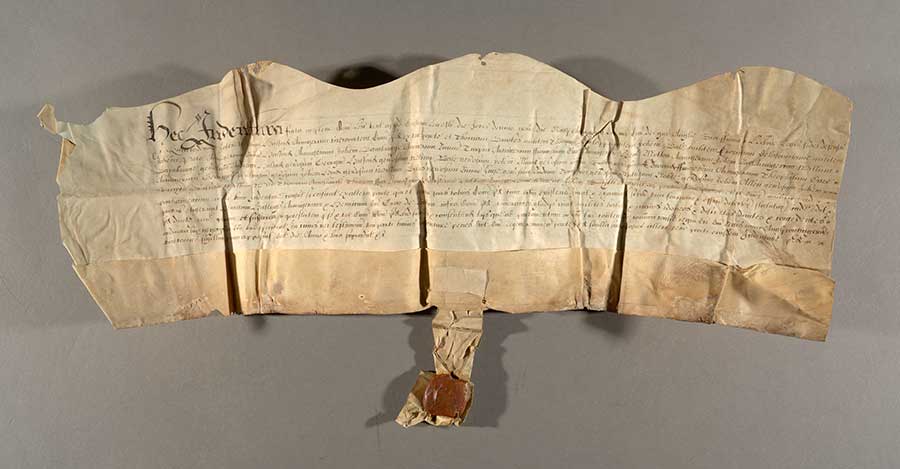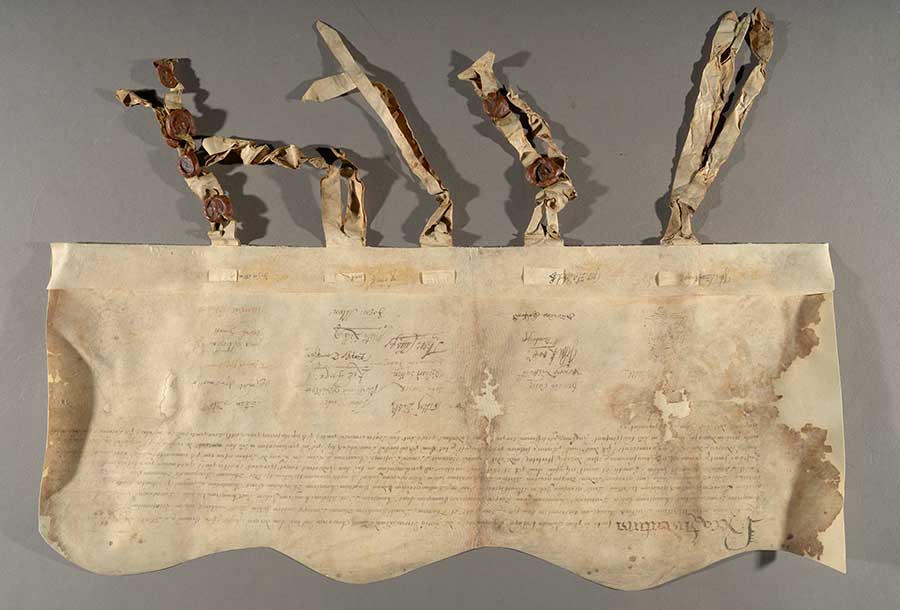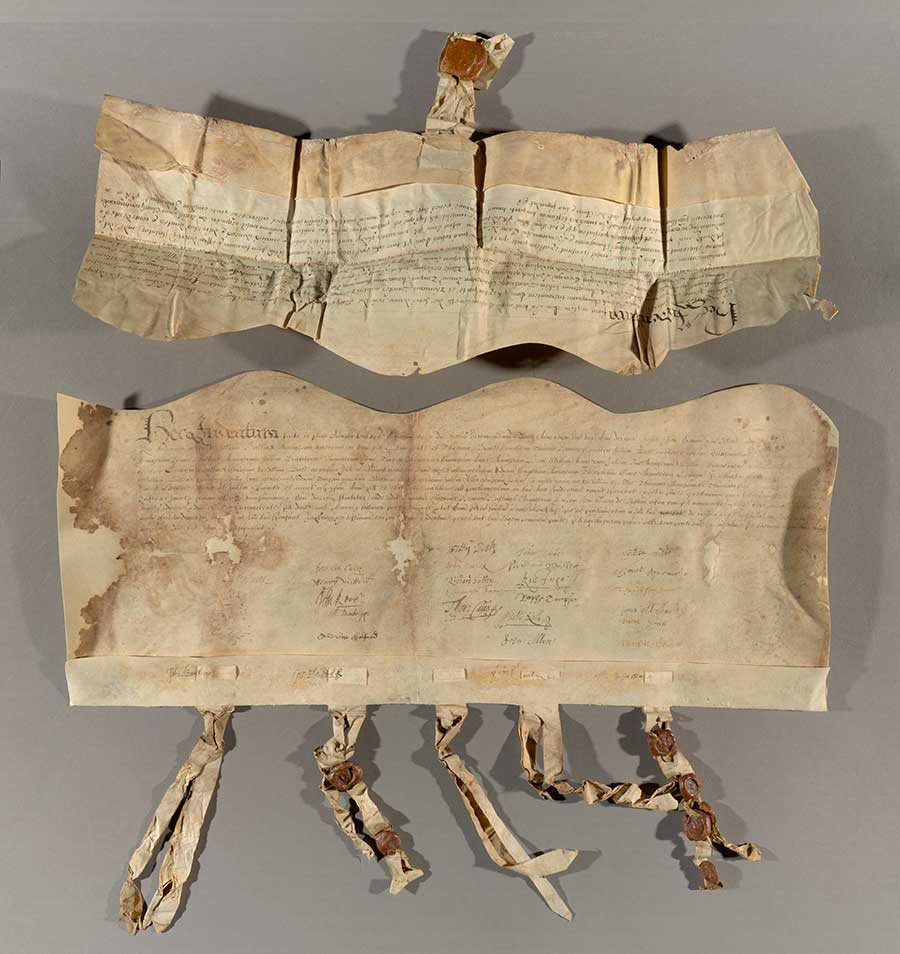The Huntington’s blog takes you behind the scenes for a scholarly view of the collections.
Securing Election Results in 1640
Posted on Wed., Jan. 13, 2021 by

This indenture, written in Latin on parchment, identifies the winning candidate in a local parliamentary election in March 1640. This top part of the manuscript was supposed to be filed in the local sheriff's office in Leicestershire and used as the official report of the winning candidate. The election, however, was contested, so this indenture was never filed. The Huntington Library, Art Museum, and Botanical Gardens.
When Congressional sessions resumed after the attack on the U.S. Capitol on Jan. 6, 2021, many people watched televised proceedings set in motion some 200 years ago. As prescribed by the 12th Amendment to the Constitution, "The President of the Senate shall, in the presence of the Senate and House of Representatives, open all the certificates and the votes shall then be counted." Sealed certificates of each state's electoral votes, contained in ceremonial mahogany boxes lined with leather, had been delivered to the Chamber of the House of Representatives. As the Capitol building was being breached by rioters, Senate aides carried the boxes to a secure location, ensuring the integrity of the procedure.
The need to ensure accurate reporting of election results is nothing new. In 17th-century England, local officials used documents called “indentures” to report the winning candidate in parliamentary elections.
The earliest use of the word “indenture” dates to the 1300s, when it described a feature of the document itself. Long before the widespread use of paper in the western world, scribes wrote contracts or deeds on parchment (treated animal skins). Then, as now, documents typically were executed by more than one party, so scribes wrote mirroring copies of the agreement on a single piece of parchment.

This is the corresponding indenture, written in Latin on parchment, which would have been sent to Westminster if the election had not been contested. The text of this bottom part of the document matches the text of the top part, which was meant to be filed in the sheriff’s office in Leicestershire. The Huntington Library, Art Museum, and Botanical Gardens.
Using a pen knife, the scribe then sliced the parchment in two with vertical cuts that resulted in a pattern that looked like either jagged jack-o-lantern teeth fitted together or rolling, interlocking, scalloped edges. The word “indenture” derives from the Latin dentatum (toothed) because the cut along the top of each of the documents resembled teeth.
Parties would affix their wax seal to one copy of the indenture. If the contents of the document were ever disputed later, the parties could retrieve their copies and set them together. If the indents along the edges of the documents fit together like puzzle pieces, they knew neither of the halves had been forged. The indents served as a security measure.
In early modern England, indentures were frequently used for contracts, deeds, and election results. After the votes were counted, the scribal clerk created an indenture declaring the winner. One portion of the indenture would remain in the custody of the local sheriff, while the other would be sent to Westminster, the seat of Parliament.

The two manuscripts were originally written on a single piece of parchment, and they state the same thing. The “indents” cut along the tops of each allow the two indentures to come together like puzzle pieces, ensuring that neither document is a forgery. The Huntington Library, Art Museum, and Botanical Gardens.
A document in The Huntington’s collections shows the results of a parliamentary election in Leicestershire in March 1640. The top part of the manuscript would normally have been filed in the local sheriff's office in Leicestershire and used as the official report of the winning candidate, while the bottom part would have been sent to Westminster in London. The election, however, was contested, so neither the top nor bottom indenture was ever filed. Instead, another election was held, after which a new pair of indentures was created, with half remaining in Leicestershire and the other half transported to Westminster.
Lawyers and local officials used indentures as a security measure for hundreds of years, and The Huntington has the largest collection of English indentures in the United States. They serve as a material reminder of the great efforts people have made for centuries to ensure safe and accurate elections.
Vanessa Wilkie is William A. Moffett Curator of Medieval Manuscripts and British History at The Huntington.